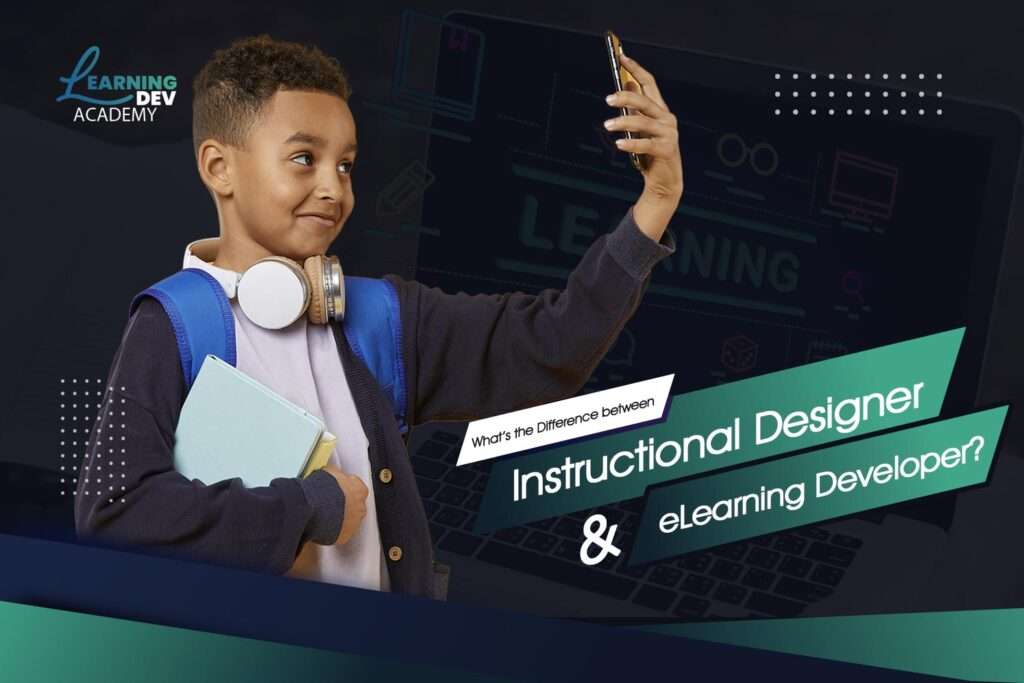There are a lot of jobs in the development and learning field, and most of the time, the roles are interchanged between the two. But little do people know that there is a huge difference between an instructional designer and eLearning developer. Even though their roles seem almost the same, each has a unique purpose. Here, we will break down the difference between an instructional designer and an eLearning developer.
What is an Instructional Designer?
An instructional designer is a person who designs and enhances an educational experience. An instructional designer’s job is to interview experts in this field, make videos of different learning modules, design eLearning courses, write quality content for guides, and write different learning objectives.
You can say that an instructional designer makes an outline and script for eLearning – like what should and must be noted in the lessons. To become an instructional designer, one must have a good number of skills. An designer should have the following expertise:
- Creating activities
- Writing and developing quiz questions
- Researching different instructional content
- Interviewing related experts on topics
- Writing instructional content
- Selecting the right methods for eLearning
- Creating and developing new learning objectives
What is an eLearning Developer?
An eLearning developer is a person who builds the eLearning course. The eLearning developer uses data and information provided by the instructional designer and implements it in the final course. The job of an eLearning developer is to make sense of the provided data and information and turn it into a course.
Basically, an eLearning developer and an instructional designer work together to create an eLearning course that is user-friendly and highly functional.
An eLearning developer has to make the course engaging and easy to understand. This also means that an eLearning developer has to be creative and should have good knowledge of graphic design.
There are some eLearning developers who are also graphic designers, while some work with one. Just like an instructional designer, an eLearning developer also has to have the following set of skills.
- Have an understanding of aesthetics, user-friendliness, and high-quality training.
- Knows the ins and outs of common web development tools, JavaScript, CSS, and HTML, to create customized designs.
- Has the potential to create interactive courses.
- Should know how to edit photos and videos for the course.
- Must be familiar with eLearning tools.
Instructional Designer v/s eLearning Developer
Both the designer and the developer have almost the same jobs. So, the question is how they differ in the process of making an eLearning course. We will look at the differences in job roles and responsibilities that will give a clear idea about it.
Step 1: Coming Up with the Design and Scope of the Course
This thing is done by the instructional designer, and they meet with the authorized personnel of the company and understand the expected standards of the course and how it should be. After this, they works on a design plan that includes the main features and elements of the course.
Step 2: Finalizing Course Objectives
At this stage, the instructional designer still has to be in touch with the authorities of the company to finalize the important objectives of the course. The goals also include the materials and information sets that need to be added to the course, like notes and links to different websites. The instructional designer will then finalize an outline of activities and interactions of the course and will work it to make it more engaging, and that cover all the objectives at the same time.
Step 3: Development of Content
This is the step when the eLearning developer steps in. The instructional designer gives the outline to the eLearning developer. Both work in this step and will make different but relevant lessons and topics and create a storyboard. The duo breaks down the final outline into small modules.
Step 4: Review
The instructional designer and the eLearning developer will take the finalized course to the authorities for review and make the changes asked of them. The management can ask to make changes multiple times. That is why the duo makes sure to work on a course to meet the expectations of the authorities.
Step 5: Production
Once the authorities have given a green single, now is the time for the development of the course. This is the step where the eLearning developer has to put everything into work to produce the best eLearning course, which is user-friendly, easy to understand, interactive, and engaging. The eLearning developer also has to make images and videos that are according to the given outline by the instructional designer.
Conclusion
There is a lot of confusion out there about the difference between an instructional designer and an eLearning developer. I hope this article has cleared up some of that confusion and helped you decide which role would be best for you in your next project. As with anything, always consult with an expert if you don’t feel confident making a decision on your own. And, as always, thanks for reading!

